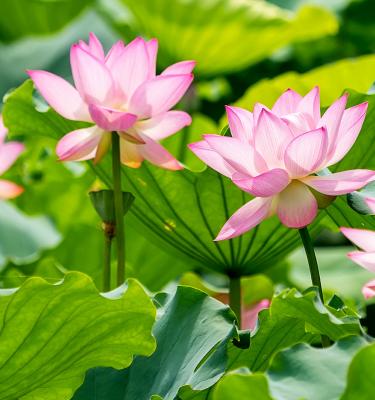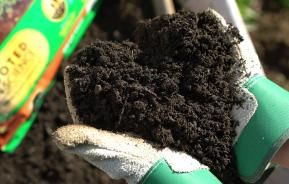Waterlilies are probably our most popular – and easiest to recognise – pond plant. Large lakes and ponds look stunning, covered with their floating leaves and their flowers in summer and autumn.
But, you don’t need a huge lake to grow and appreciate waterlilies at home – dwarf varieties, for instance, can grow in even a small waterproof pot or similar container.
How to grow waterlilies
Cultivating waterlilies
To flower profusely, nearly all waterlilies need a position in full sun. In order to grow and flower successfully, they need calm, still water, so keep them away from disturbances from waterfalls, fountains or pumps.
Waterlily varieties
There are numerous varieties, from dwarf ones that only spread 30-60cm (1-2ft), medium 60cm-1.2m (2-4ft) and vigorous up to 2.4m (8ft). The larger ones need deeper water to grow and flower successfully – so make sure the plant’s size is suitable for the size of the pond and the depth of water available.
Small and dwarf waterlilies
Need water 30-45cm (12-18in) deep.
- Candida: White flowers
- Pygmaea Helvola: Yellow flowers
- Pygmaea Rubra: Deep rose-pink flowers ageing to deep red
Medium waterlilies
Need water 45-75cm (18-30in) deep.
- James Brydon: Rose-red flowers and purplish leaves
- Marliacea Albida: White flowers
- Rene Gerard: Rosy-red flowers
Large waterlilies
Need water 75cm-1.2m (2.5-4ft) deep.
- Attraction: Pinky-red flowers fading to white
- Escarboucle: Red flowers
- Gladstoniana: White flowers

How to plant and grow waterlilies
Waterlilies are best planted from mid to late spring to mid-summer. Plants are best grown in aquatic planting baskets, and plants bought from aquatic centres will normally come pre-planted in one and ready to submerge in the water. If not, choose the right size for the plant’s size and vigour.
Cut back any overly long roots and remove any old or damaged leaves and flower buds. Line the basket with hessian, and fill with unfertile loamy soil or, better still, aquatic planting compost, ensuring the plant’s crown is at soil level. Cover the compost surface with a layer of washed pea shingle.
Water the compost well and allow excess water to drain away before placing in the pond. Then submerge the plant slowly in the water, so that around 10-25cm (4-10in) of water – depending on the size of plant – covers the crown and the leaves float on the surface. The final planting depth should be given on the label that comes with the plant. If not – ask first before buying. To ensure the correct depth, you can place the basket on top of bricks or similar raised platform.
As the plants grow, gradually lower the basket in stages until it reaches its final planting depth.
Small varieties can be grown in large ponds by keeping them growing on a raised platform.
Where to plant waterlilies
Ponds, water gardens, water features.
How to care for waterlilies
Waterlilies are hungry plants. Although they will receive much of the nutrients they need from the surrounding water, you can also care for waterlilies by feeding them with a specialist aquatic slow-release plant food placed in the compost.
Remove any yellow leaves as they appear and remove faded flowers as they go over. Cut them off below the water line, preferably tracing them back to where they join the main crown of the plant.
If necessary, you can divide waterlilies every 4-6 years, depending on their vigour. Lift the plant from the water in late spring or early summer. You should see a thick, fleshy main crown with smaller, rhizomes coming off it. Cut off these smaller rhizomes with a clean, sharp knife. Pot up the rhizomes in aquatic planting compost in planting crates, inserting them vertically just under the compost surface, with the fibrous roots spread out below. Cover the compost with washed pea shingle.
| Flowering season(s) | Summer, Autumn |
|---|---|
| Foliage season(s) | Spring, Summer, Autumn, Winter |
| Sunlight | Full sun |
| Soil type | Loamy |
| Soil pH | Neutral |
| Soil moisture | Poorly drained |
| Ultimate height | 10-15cm (4-6in) |
| Ultimate spread | Up to 2.4m (8ft) depending on variety |
| Time to ultimate height | 5-6 months |








